Discover the region through intangible heritage.
In the month of May, the colleagues of Passaport Marina Alta propose to us to discover a traditional sport of our region, it is their proposal: Tradition of the Valencian Pilota. “Trinquets and streets are the main attractions of this route-experience that passes through 6 towns where this sport is experienced as on the first day.”
Marina Alta passport

You can also download and check the complete info at the following link:
[Downloadable PDF]

[...]
For this reason, the MACMA team put our rucksacks on our backs and went to explore it, following the directions of the Marina Alta Passport. And this was the result; stage by stage and village by village, we will reveal to you the history and curiosities of the places we have visited on this excursion, which we have enjoyed a lot, and now we hope you will too.
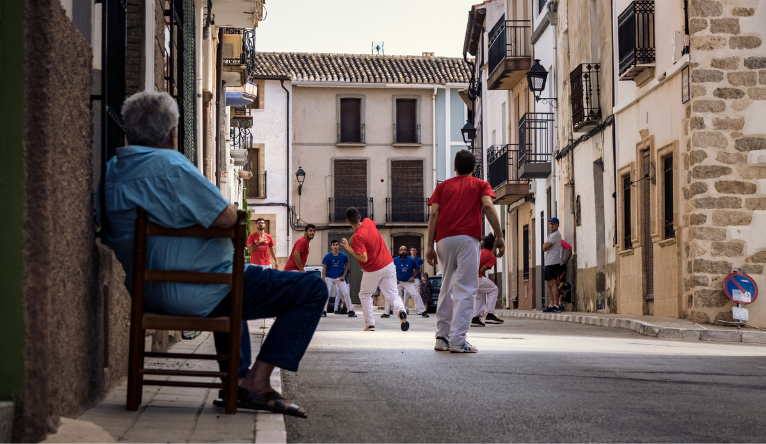
A BIT OF HISTORY. We know where we come from to decide where we are going.
From the MACMA, the experience we have proposed for the month of May has to do with the intangible cultural heritage and the history of our towns through the Valencian Ball. Indigenous sport of the territory in which two teams compete while throwing a ball with their hands.
But, to talk about the Valencian Ball, we have to go back to its beginnings, in Ancient Greece, when it was already played to hit the ball with the hands. But who spread this game throughout the empire, they be the Romans. In the case of our lands, it arrived from the hand of Jaume I in the 13th century. Since that moment, its use has only increased until it is called the Valencian Ball and is considered one of the most important and valued sports in the Valencian territory.
The popularity was so great that it came to be considered a factor of social unrest by all the people who followed this sport, which caused that in many towns it was decided to ban playing in the street. However, the fame and popularity of the sport was already rooted and people did not agree to lose it from their lives. In 1391, they joined forces and a side was formed in the city of Valencia to keep the Valencian Ball in the streets and in the town squares. This claim transcended so much that from that moment ratchets ceased to be exclusive to nobles and began to be used by the popular classes. Thus increasing the reputation of this sport among the population, and ratchets were built and gables everywhere.
Here, in the Marina Alta, a documentary reference is kept in Gaspar Escolano's chronicle The First Decade of the History of Valencia. Escolano explained how during the Moorish revolt of 1609, in the municipality of Xaló, the parish priest had to flee hidden and went up to Benissa to ask for help, where he interrupted a ball game that was being played there.
During the 19th and early 20th centuries, this sport was at its peak. The boom was so great that everything revolved around Valencian Pilota, parties, culture, and celebrations. From the noble classes to the humblest peasants, both met at the ratchet, to play, bet and enjoy matches of the considered professionals of that time. The taste for this sport was so great that during this time many ratchets were built everywhere. Historical matches were played like the one in 1880 in Ondara between Marina Alta and Safor, and a lot of money was bet and won through the ball games.
The rise of sport, already rooted as a tradition and culture, suffered a decline from 1936 due to the Spanish Civil War and the entry of the dictatorship. Franco did not hesitate to show his disagreement with the practice of this sport, since it was a place of social revolt where people who used the Valencian language gathered. In addition, it was frequented by the lower classes and by people who were not Catholic. Since they did not have the support of Franco, many people stopped going to see matches and to practice it.
Although there were many years in which the Valencian Pilota culture was in the shadow of the dictatorship, the tradition did not disappear, on the contrary, it re-emerged in the light with greater strength and voice. So much so, that in 1985 the Valencian Volleyball Federation broke away from the state one and began to organize competitions and regulate rules and measures specific to this variant.
The Valencian Ball includes a wide variety of different styles and modalities. First, you need to differentiate between indirect and direct style. The differences between these are that in the first, the two teams play on the same side and face each other by throwing the ball against a wall, called a pediment. The modalities that exist in this style are the Pediment and the Friar. Currently, in the Marina Alta area there are many towns, such as Alcalalí, Tormos, Beniarbeig, Pedreguer, Parcent, among others, that still maintain their fronton. In the direct style the form of the game changes, the two teams face each other, separated by a rope or stripes and hit the ball to pass it from one side to the other. Within this style we find 6 modes: Brush, ladder and rope, big ball, galoshes, galotxeta and striped games (palm, long and perch). Differentiated by the place where it is played, on the street or on the racquet (closed rectangular court with stairs on one of the long sides). The players are divided into two teams: Those who play the draw and those who play the rest.
A common feature between these two styles is that it is played by hitting a ball, but each modality usually has a different one, having a total of 5 types of ball (cow, badana, teak, galotxeta and fat), differentiated by their weight, size and material.
Another particularity that all these forms of Valencian ball have in common is the hand bandage. A whole procedure worth seeing, how they protect the palm and fingers with different materials, cardboard, tape, metal plates and in some cases, with thimbles. In the following link we find a demonstration of the ritual of the hands, a complex technique that requires the bandage to properly protect the hands during the game.
The oldest modality that is known is the long one, which derives from the big ball. This was followed by the galotxa and the galotxeta, finally developing the modality of ladder and rope. The latter, together with the brush, are the two most prestigious modalities today and the only ones that have professional players on a regional scale.
The teams are always divided by the name of reds or blues, depending on the sash or shirt that is worn. Colours are usually chosen based on team origin, experience, or number of players. The colour red is typically the home team, the one considered superior or more experienced, or with a smaller number of players (when playing a pair against a trio). The away team, with three players or fewer experience, will be the blue team.
In the case of Marina Alta, the modalities practised are ladder and rope, brush, big and long ball and palm.
Les llargues is the mother of the Valencian ball and the most international. It is played in the street, either in the street of a village or on artificial streets that have recently appeared in our region. Palma is a variant very similar to long ones, the only difference is that when removing soles it can be done with a palm strike. Both are part of the striped game, as during the game, stripes are made on the street to mark the games.
The brush can be played both in a racket and in the fairway, with minor variations. The name is due to the fact that, mostly, the ball rolls on the ground and the goalkeeper has to scrape the ground with his hand to return the ball to the opposing team.
The ladder and rope is a modality that is played in ratchet with one team facing the other. In this mode the two teams are separated by a rope and what they have to try is to play the ball, either by letting it hit a bounce or without letting it bounce, and passing it over the rope.
Finally, we have the big ball, it is a modality that is currently only practised in three municipalities, in Abdet, Ondara and Parcent. It is played in the ratchet and in Marina Alta there are only two active, Ondara and Parcent. As in the other modes, there are two teams, the draw and the rest, it is played with a bigger and whiter ball and a smaller ratchet, used only for big balls.
Nowadays, in practically every form and every weekend, matches are played both in the streets and on the pitches of different towns. We can find both professional matches that are regulated by the Valencian Pilota Federation, and friendly or league matches organized by the different municipalities, schools, and clubs. At the end of the experience, we will be able to find a calendar with the games for the month of May.
Curiosities:
- “Home bo”: judge or referee who raises his arm to mark an invalid play, whether the ball is good or not, or who has won the fifteen. In non-professional matches, it is usually any spectator who knows a lot about the sport.
- “Va de bo”: an expression that indicates that the game is starting or resuming.
- “Arruixar”: hitting the ball powerfully and impulsively.
- “De bragueta” or “de butxaca”: it means they hit the ball below the waist and with the arm close to the body.
- “Calbotada”: a signal that a player makes with his head to notify his godfather or bidder that he/she can bet on him/her.
- “Empalmar”: is the expression used when a player hits the ball as it comes, without letting it hit the ground.
- “Esclafit”, is the noise produced by the ball when it is hit with the hand.
- At the end of the 19th century, it was so booming that there wasn't a town that didn't have one or several ball games in its festival schedule. Both from the most valued professionals and from fans who practice the sport for pleasure to play.
PROPOSED DAYS. Step by step we are making our way.
Do you want to roll like a pilota and enter the towns of the Marina Alta? This experience gives you the chance to enjoy the excitement of a match on the street or at the trinquets, and to be able to enjoy watching a net o palm game. Live the experience from the inside, town by town, catching a glimpse of the distinct styles of Valencian Pilota that fill our streets.
In the municipality of Beniarbeig is where we will begin our experience of the month. And why did we choose to start here? Because it is the town where Fanni Mas lives, professional pilotari and elite athlete. In the video, we can see the interview done by our colleagues from the Youth Network for a campaign called “women and sport”.
Escoles St is where the walk around the town will begin, and you can also park your car right there. There we will find the old schools, a building built in 1931 thanks to the financial contributions of the Santonja family, a fact that you can see on the facade itself. Later, it was transferred to the City Council until 1964 when the new schools were built. The building is divided into different parts, on one side you can see the school for girls and on the other side for boys. The centre area was the houses for the teachers.
Once we have contemplated this particular building, we will go to the bridge that crosses the Girona river. On the way to this stop we will be able to see the church of Sant Joan Baptista , in the Baroque style, that was built in the 18th century. The bridge that joins two parts of the municipality was built in 2007, since the previous stone bridge was overthrown by a river that swept away the entire construction. The new bridge, called Meridià Zero, is a very modern suspension brace structure. We can cross the bridge and go down Sénia St until we reach the recreational area of the Girona river. We will be able to appreciate an arch of the old bridge that was rebuilt as a form of historical memory. To finish, in this same park, we can find the fronton, a rectangular space with three walls with stripes across them, where you can play fronton or fraret, two types of indirect-style Valencian Pilota.
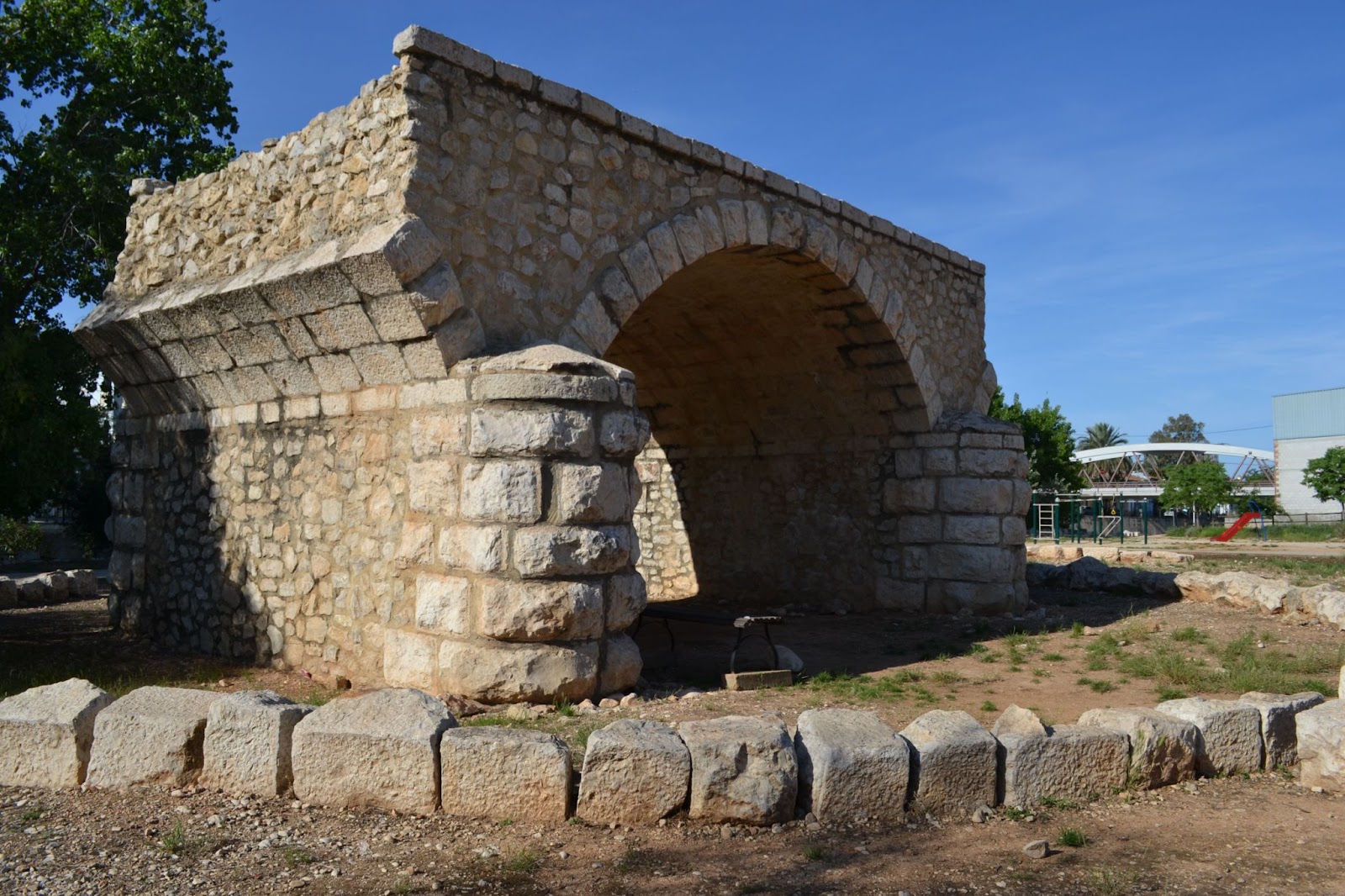
In this municipality we recommend stopping to eat in some of its bars and enjoy a good breakfast with peanuts, lupins and brined olives, Valencian salad, a white and black sausage sandwich and, to finish, a “cremaet”.
By car, we will go to the next town, Tormos, a small town in the inland area of Marina Alta. Where we can find another fronton in the sports area of the municipality, and also Santa Creu St, where llargues and palma modalities are played.
Once you have visited Tormos, we will head to La Vall de Laguar , a municipality made up of three towns with a lot of charm and passion for the game. The place is located in the mountainous area of the interior of the region. In addition, it is the municipality of Hèctor de Laguar, midfielder and professional ladder and rope of the Valencian Pilota Federation.
To get to the municipality, we will go along the CV721 road to Benimaurell, “the village at the top” of the valley. One place where you can park is in the car park on Olbis St. It is recommended to walk through the streets of the town, and pass by Príncep Street. Valencian Pilota is played there every weekend, especially palma and llargues, and where several league tournaments are played. In addition, next to this street we find Plaça del Sacrament where you can visit the church of Saint Cosme and Saint Damià, a small and cosy temple built on top of the original Muslim mosque. If we continue to wander to La Unió St, we will find a path that leads to the Benimaurell historical laundry venue, an element of our emblematic architecture worthy of admiration. This washer receives water from a spring dated 1861.
Next, we will take the car again to go down to the "poble d'enmig" (the village in the middle), to the car park on Major St de Fleix. On this same street, you ball is sometimes played. From there, as in the previous town, we recommend walking through the streets, among which we will find the church of Sant Pasqual Bailón , a temple from the beginning of the 18th century. Then we propose a different walk, changing to a walking route by footpath to enjoy the landscape of the valley, the fauna, and flora that surrounds it. This ethnobotanical walk begins by walking from the church of Fleix, passing through Sant Joan St until we reach the exit of the town where we will go to the path that goes to the Font del Gel. From here we will make our way to the hermitage of Sant Josep de Campell. Right there we can make a stop to admire the sprouting species planted by the students of CEIP Cavall Verd, and we can find information about each one. The aim of this activity was to obtain a seed bank of autochthonous species capable of surviving a large fire such as the one experienced in August 2022 in this area. Once we have enjoyed the Jardí Rebrotador, we will continue along Sant Antoni St. until we reach the llavador and fountain of Campell, perfect for resting in the shade and refreshing yourself with the water that runs through this area. Following this street we will reach the "poble de baix" (lower town), Campell, as in the two previous ones, walk through its small streets, among them Carrer la Plaça, where they also play games of llargues and palma. We will see the church of Santa Anna de Campell, and then we will walk back to Fleix via the Penya Llisa departure and the La Casota departure, a path that reaches Major St, where the car park is.
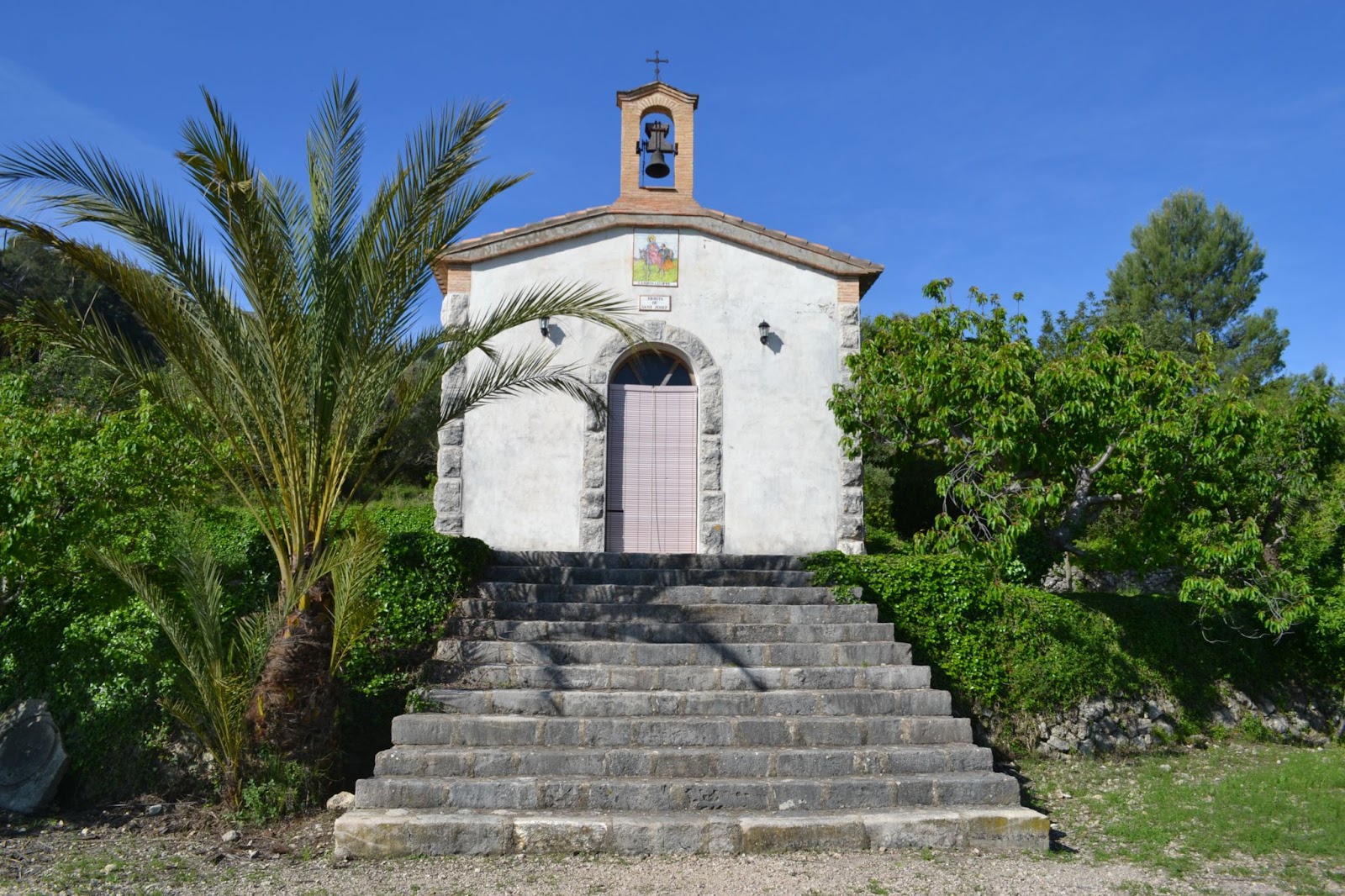
From the top of the car we will head to the next municipality, but you cannot end the visit in this one without passing by the Sanatorium of Sant Francesc de Borja, or better known as the Sanatorium of Fontilles. There we can find a set of buildings, including several pavilions, a laundry, a cemetery, and a church run by the Jesuits. The Sanatorium opened its doors in 1909 to treat more than 3,000 people affected by leprosy. His role was fundamental for the elimination of the disease in Spain. Currently, a large part of the buildings is used as a residential centre for the elderly.
If we continue down the CV-721, we will reach a point on the road that we can turn right onto the CV-718 in the direction of Orba. This municipality where it is recommended to stop to eat in the bars and restaurants of the town and continue with the route of the Valencian Pilota, where we will find numerous streets, a trinquet, and a club. All these spaces frequented by Josep Roig, known as “El Conillet”, professional ladder and rope midfielder, who made his debut when he was only 19 years old.
We will start by parking on Lepanto St and walking along this same street, up to Ajuntament Sq, where we can stop to see the current town hall building . Continuing up, we arrive at Fontilles Ave, where we will turn left and, at the first intersection, we will be able to see Sant Antoni St, one of the three streets where pilota is played in this municipality. If we continue along the avenue and reach the end of it, we will see Major St, another street where ball is also played, usually at the end of the league or matches. Going down this street we will arrive at Espanya Sq where we can appreciate the building of the old town hall and the Church of the Nativity of the Lord. It displays a contemporary appearance due to the restorations that were made there in the 19th and 20th century. From here we will go to Sant Francesc St, the third street where pilota is played, one of the oldest and most important in the municipality. In these three streets, long and palm are played, both in league matches and tournaments throughout the year. At the end of this street, on the right, you will find la Pilota Sq, a space recently created by the city council in tribute to this sport. Going down this street we will reach Empedrat Sq, and we will continue down Pintor Ruano St until we reach Font de Baix, built in 1904 with cut stone. This public space has the fountain, the ditch and a covered laundry venue. To finish this urban route through Orba, we will cross the CV-715 and walking along the pool path we will reach the Trinquet, renovated in 2019. We can also find a fronton there . Places where, together with the pilota courts, both children, young people and professionals learn and practice this sport in different ways.
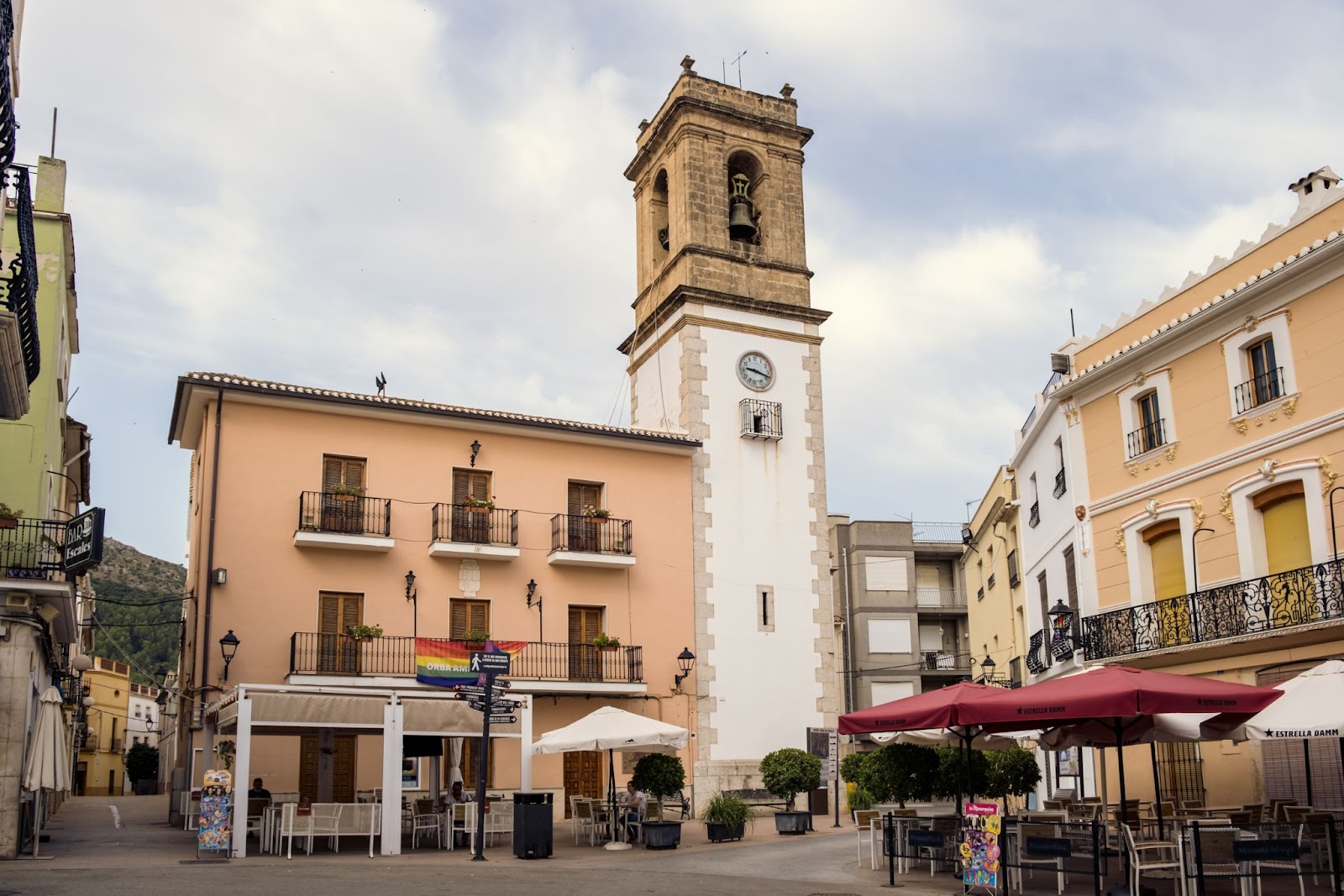
We will return to the car and continue in the direction of the next municipality where is Marc Giner , a Valencian pilot who has been playing professionally since 2017 as a ladder and rope rest and one of the best rated in 2024. In addition, it is also the town of José Vicente Riera Calatayud, better known as El Nel , who was considered one of the best players of his time and decorated with the gold badge by the Valencian Volleyball Federation in 1987. El Nel played largues and galotxa, but his contribution to the Valencian Pilota did not stop there, it went further until it became historic. Nel introduced the central string to the ratchets where stripes were played, which gave clarity to the scores and gave rise to the ladder and rope modality. An innovation that marked the history of this sport, making Nel's memory immortal. The town we are talking about is Murla , a town in the interior of the Marina Alta located in the Vall de Pop.
To finish the first day of this experience, we will leave the car in the cemetery parking lot and go down the street to the Hermitage of the Divine Aurora , also known as the Hermitage of the Blood. The place it occupies was once a hospital or charity house and later also a prison. Turning right we arrive at Plaça del Nel , a tribute to the game's great reference. This same street is where Pilota is played almost every weekend, Carrer Pare Vives. Continuing straight on, we will reach the Plaça Major where you can see the Rajolat , which can tell us a thousand stories about the murlers and murleras of the 20th century. A bank of slabs where hundreds of people, who left in search of a better life, waited for buses and cars to start their journey to the United States of America. Then, following Carrer Sant Josep, we will arrive at the fortified church of Sant Miquel Arcàngel . In the 16th century it had a defensive function against the attacks of the Redbeard pirates. Its bell tower fell completely in 1990 and in 2010 the work of the new bell tower began. Right next to the Pop castle we can find the old Murla washer , a particular element of the municipality, since in order to bring water from the spring they had to channel the water under the houses. We can follow the course of the canals until we reach the new laundry next to the fountain, on Carrer la Font. To end this complete day, we recommend going to the Trinquet del Nel , walking along the Camí de la Creu and seeing one of the spaces that saw one of the best Valencian ball players grow up.
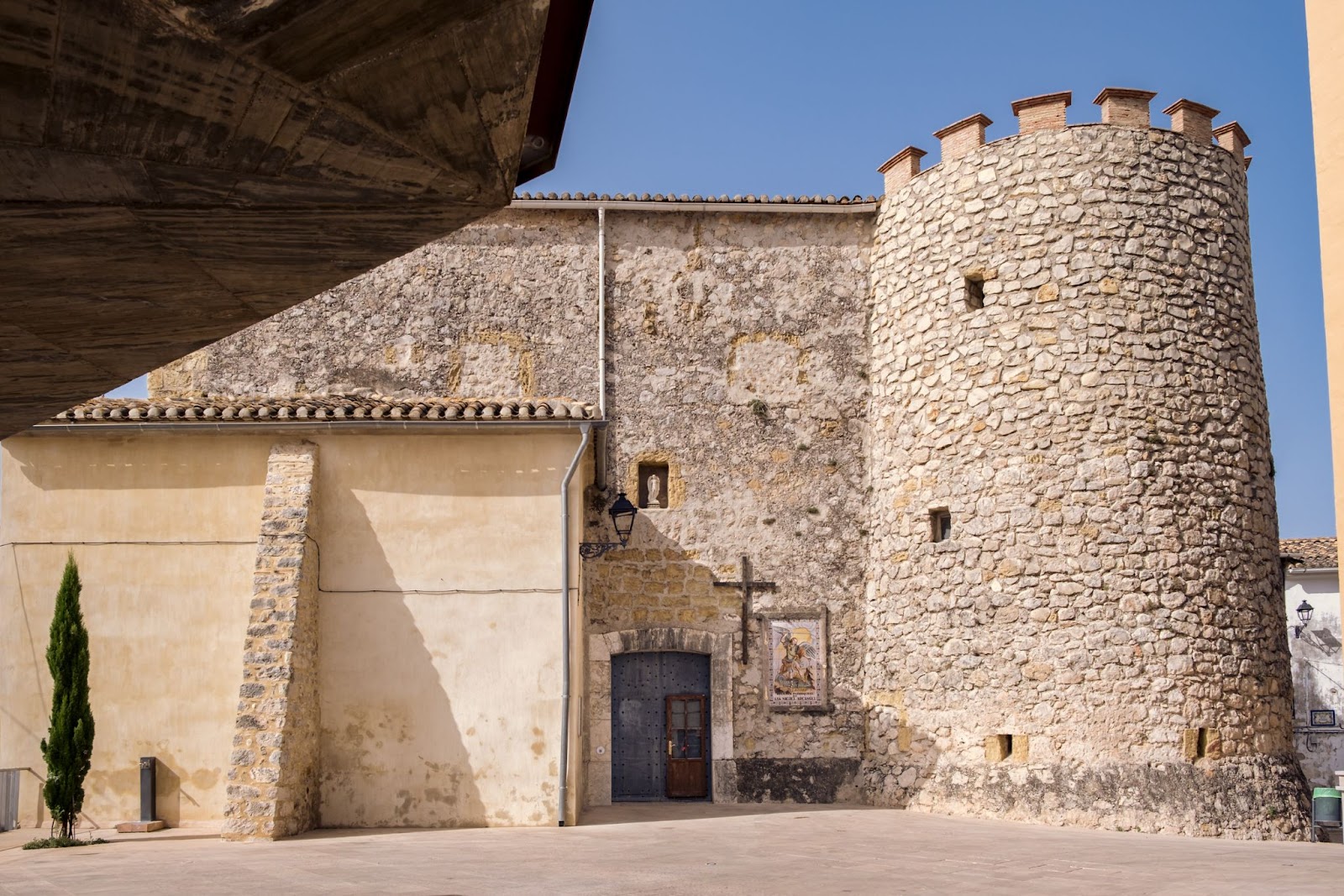
On the second and last day of the experience, we will follow the experience from Parcent, so if you do the experience in two days in a row, we recommend spending the night in a nearby town.
Let's start a new day by going into Parcent , a town very marked by the Valencian Ball and a modality rarely practiced these days, the big ball. We can park in the Costera de la Font car park, and first of all, to face this second day, we need to gather strength with a good breakfast and try typical local foods such as pancakes and coke with paprika and tomato.
The first stop on the tour of the town is Casa Gabriel Miró , a late 16th and early 17th century building where the writer lived and which is currently used as a cultural center. If we cross the square, we will reach Carrer de Dalt , a space where boys and girls play largues and palma. From this street, we recommend going around Parcent and seeing another street where Valencian ball is played, Carrer de l'Era and ending up in the town square, where the market is held every Monday morning. In this same church of the Immaculate Conception is located , in 1630 the old temple was demolished and a new one began to be built. Finally, one of the streets that reaches the square is Carrer de l'Ajuntament and at the end of this we will find a path that leads to the Trinquet de Pilota Grossa . In the entire Marina Alta we can only find this type of ratchet in Ondara and Parcent, where the Championship of this type of ball is played.

Afterwards, we will take the car and head to the next town, Xaló. Another town that has a professional player, Joan Bautista Buigues or Tomàs II, who has been playing professionally since 2004 and does so as a striker and midfielder in the ladder and rope mode.
The first stop will be in the car park of the Municipal Reading Agency, where we can park the car. The space built next to it is the sports centre, where we can see the fronton that the town has and where the municipality's ball school teaches how to play pediment and other forms of Valencian ball. Right next to it is Pla de l'Horta St, where games of long and brush are played and where also, the ball school uses with the students. About 30 years ago, Xaló also had a ratchet which was entered through a private house. This was active from the beginning of the 19th century to the end of the 20th century, currently the “trinquet” is still standing, but it is not active, as it is still part of a private house. Then, we will go along Colònia St of Llíber until we reach the Molí del Giner, one of the four flour mills that were spread throughout the river as it passed through the term of Xaló. They took advantage of the driving force of the water as energy to grind the grain It is known that it already worked at the end of the 14th century until the 1970s, when it stopped grinding this cereal. From here we will go inside the town to Major Sq, there we will find another emblematic building of Xaló. We are talking about the Casa Palau de la Duquessa Almodóvar, built in 1598. The house is known because the Duchess of Almodóvar lived in it, an aristocrat with a long list of titles, considered the richest woman in Valencia. She is an enlightened woman, with an enterprising and restless nature. Right in front of the Palace is the church of Santa Maria, a neoclassical style temple that was completed in 1831, in which the most remarkable thing about the temple is its octagonal bell tower (since there are very few throughout La Marina) . Finally, if we walk along Sant Joan Baptista St, we will reach Canonge En Pere Mauri St, another street where they play pilota and where Tomàs II took his first steps in this world.
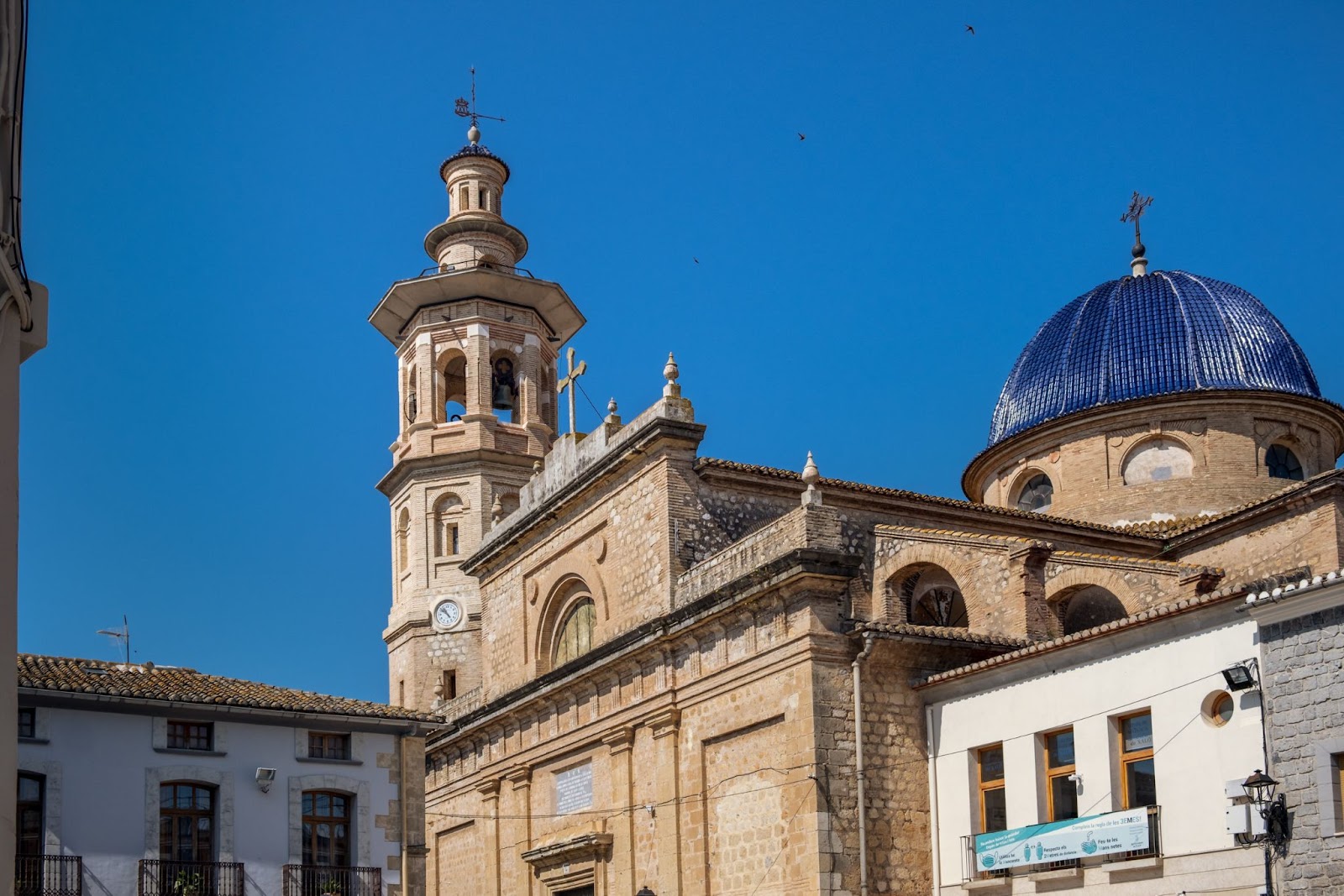 To end this visit, we recommend a stop to enjoy a visit and tasting of wines made with grapes from the same vineyards grown throughout the area. Experience first-hand how winemakers extract the aromas and flavours of the land and concentrate them in this drink.
To end this visit, we recommend a stop to enjoy a visit and tasting of wines made with grapes from the same vineyards grown throughout the area. Experience first-hand how winemakers extract the aromas and flavours of the land and concentrate them in this drink.
The next town we will go to is Llíber. In this municipality we will leave the car in the car park which is located at the crossing of the Plan. From here, we will walk up the cobbled streets of the town until we meet Sant Roc St, and we will walk along it to Major Sq. At this height of the street is where the games are played and where the town's Ball Club trains. On the other hand, from the square we propose to start an urban route called Llíber: About the senses. The route is prepared to interact with the five senses through several QR codes that give all the information about the history of Llíber. On the route we will be able to see different emblematic elements such as the wells of Llíber, the farms of Marnes and the Cau or some riuraus, space built for the drying of grapes and the processing of raisins. In addition, this route offers us unique views of the vine crops.
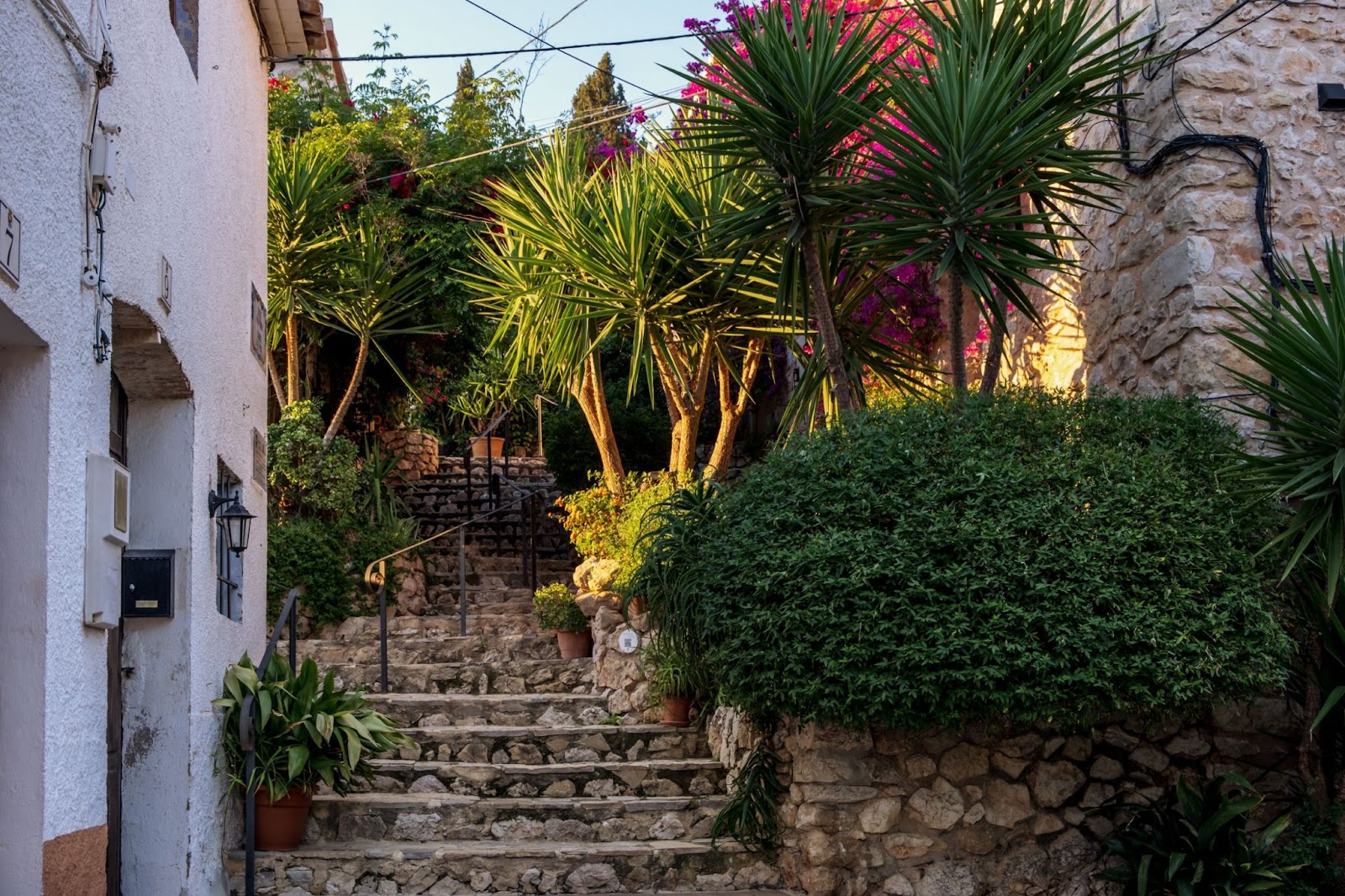
Finally, we will go to the last village of this experience for the month of May. Benissa, one of the towns in the Marina Alta where professional matches are played in Valencian ball. It has its own ladder and rope championship where they play to win the Benissa Pilota Trophy, which is played the first and second week of December. In addition, on April 28, the final of the Provincial Council of Alicante will be played in brush and ladder and rope.
To start, we will leave the car in the car park on Camí vell de Xaló, next to the school. From here, along Escoto St, we will find the Convent of the Franciscans, settled in 1611 and the convent inaugurated in 1613. We can take a walk around to see its construction. Then, we will walk until we reach Desemparats St, where the Casa Museu Abargues is located. A place full of stories that will take us back more than 100 years to learn about the life that characterized the wealthy class of Benissa. In the parallel street below, there are three emblematic elements of the municipality: The Sala del Consell, a building with large stone arcades that was built in the 16th century with the aim of storing wheat. Les Cases del Batlle, two stately homes where the mayor of the town of Benissa resided. Further on is the Riberer monument, a stone sculpture commemorating all the people who went to work in the rice fields of La Ribera. Then we will go down Mossén Gaspar Tello St to Pare Andrés Ivars St where you will find Rei Jaume I Sq and the Church of the Puríssima Xiquta which was inaugurated in 1929. It took 27 years to build this neo-Gothic style temple. Finally, to finish visiting this municipality and close the experience of Valencian sport considered intangible heritage, we will walk along Sant Nicolau St to Hort de Bordes St where the professional Trinquet of Benissa is located. We can visit it and enjoy an evening with a game of brush or ladder and rope.
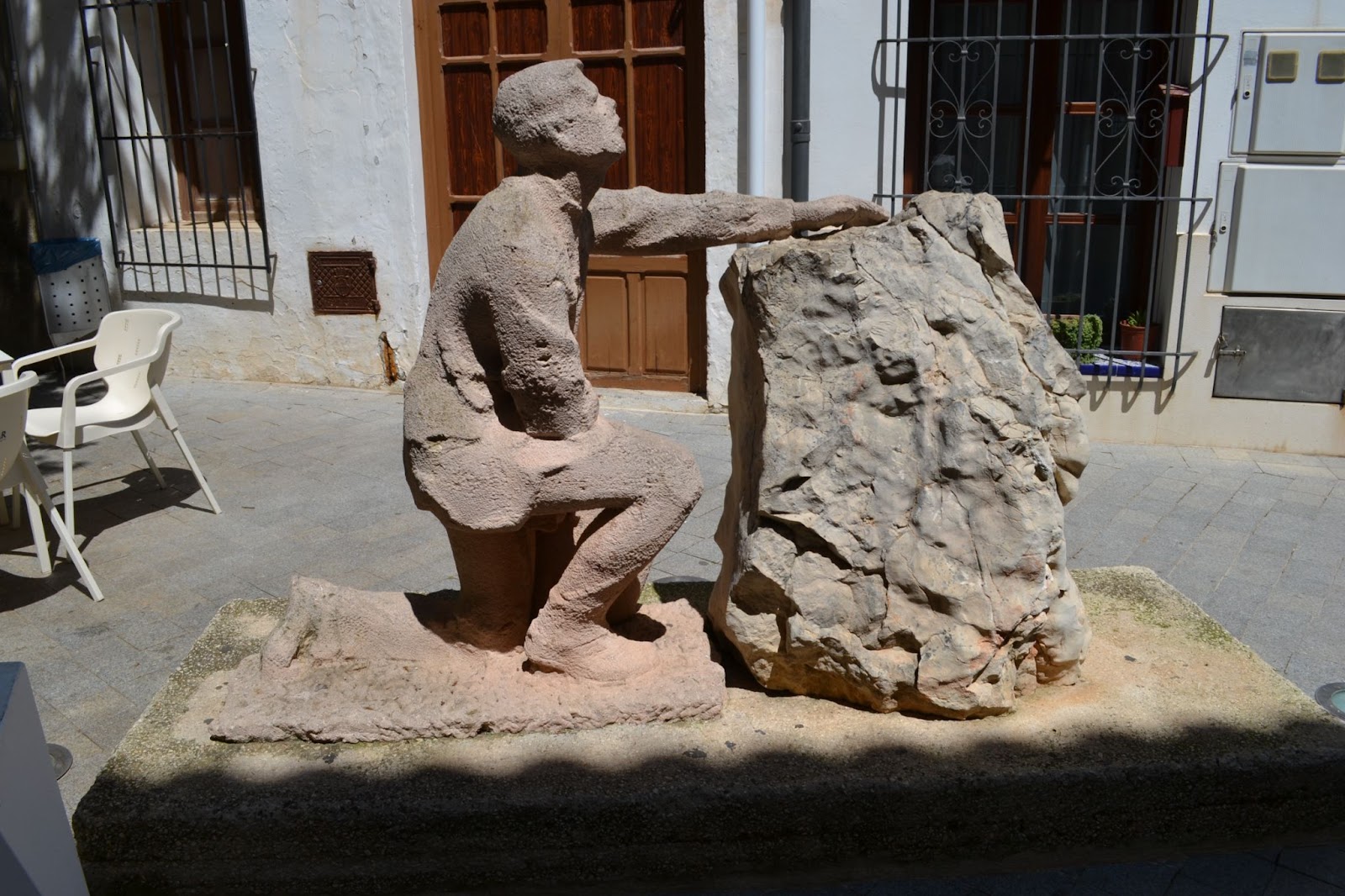
For our people, Valencian Pilota is not just a sport, it is the heritage of our land, it is a feeling. Both the players and the fans live the game as a model of life. They wake up on a Saturday or Sunday with the certainty that it will be a very full day. They go to the bar to have their cocoa sandwich for breakfast, then go to the street where the game of llargues or palma is contested. Before starting the game, they discuss their expectations and bets on the game. During the game, they comment on the plays with their emotions running high. And at the end, they have the dinaora (anise aperitif usually taken before going to lunch with something to eat, also known as vermouth) and celebrate the game as if they had played themselves. This is what the Valencian ball consists of, playing convoy, enjoying the sport, going to breakfast, getting together with friends and shouting Joc Net! Or… It's good!, as if it were the first time. No, it's not just a sport, it's a way of life.
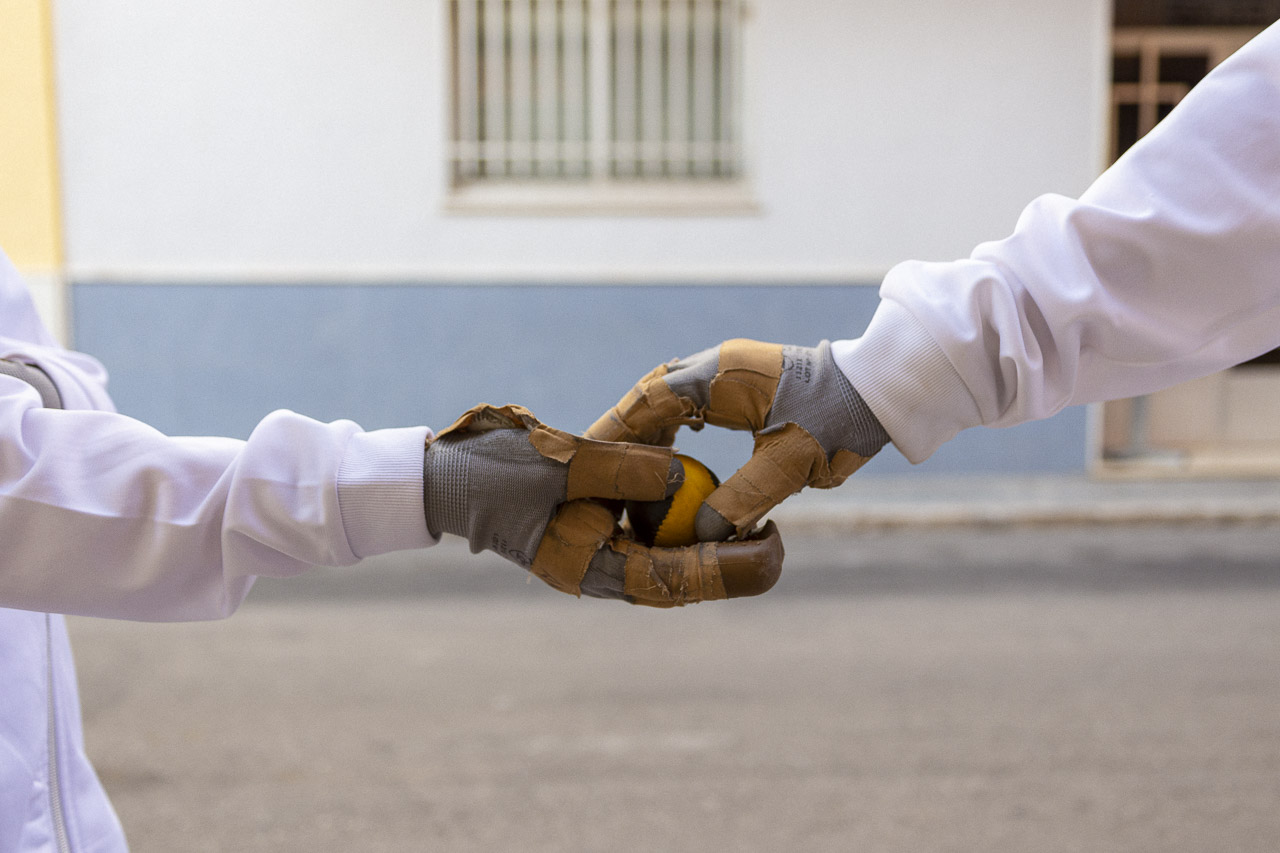
To complete this experience and experience the sport of ball first hand, the MACMA team has created a calendar with ball games of the different types. Both in the nine towns we pass through and the rest of the towns in the Marina high. In the calendar, we include the matches of professional leagues that are contested in the Marina Alta. The MACMA team will be updating the calendar throughout the month of May to include new matches. For more information, you can go to the website of the Valencian Pilota Federation.
Calendar of Valencian Pilota games (PDF)
**This experience is designed to be done over two days, either consecutively or on two different days. The MACMA team suggests routes, spaces and buildings to visit, but each person can adapt the experience to their abilities, physical resistance and interests. If you want more information or things to visit in each town, you can go to the Descobrim la Marina Alta website and adapt the experience to your tastes with your backpack. To be able to enjoy live Valencian ball games, it is most convenient to visit the municipalities at the weekend.
You can follow May's experience using this map.

AND MORE. On the table and in bed at the first cry.
 Where to buy | 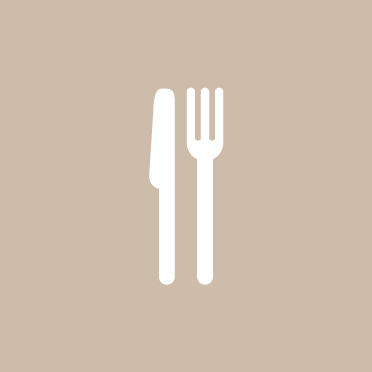 where to eat |
 where to sleep |  Activities and others |